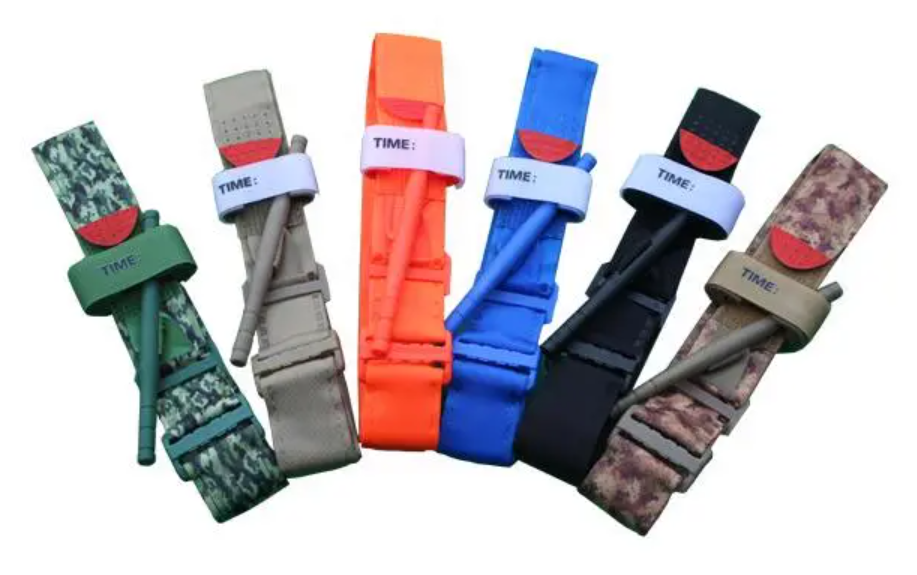From spinning tourniquet to combat dressing, look at the knowledge of battlefield hemostasis: hemostasis in tactical first aid?
tactical first aid, blood loss is the most urgent threat to the lives of the wounded. Therefore, on the battlefield, hemostasis has become a priority in first aid. How does the U.S. military do this?
soldiers are injured on the battlefield, no matter what kind of trauma, more or less will be accompanied by blood loss. Healthy adults account for 7% ~ 8% of the body weight. Once blood loss exceeds 30% of the total blood volume, it will be life-threatening. Fatal bleeding on the battlefield accounts for about 85% of preventable combat injury deaths, which is the first cause of death in combat trauma, and we usually call soldiers giving their lives "bloody sacrifice". Blood loss is the most urgent threat to the lives of the wounded, so it has become a priority in the tactical first aid system.
tactical first aid is "MARCH", that is, according to the control of massive bleeding (Mass hemorrhage), open airway (Airway), ensure breathing (Respirations), blood circulation (Circulation), handling head injuries/hypothermia (Head injury/Hypothermia) to carry out preliminary treatment of the wounded.
control of massive bleeding is the most important thing. In this link, binding tourniquets, bandages and hemostatic dressings for the wounded are important life-saving techniques that can be adopted. This article shows the hemostatic rescue disposal method adopted by the US military.
limb trauma is the most common combat trauma in modern warfare, accounting for about 30% of all kinds of combat injuries. At present, the active U.S. military forces usually use the C- A-T one-hand rotary tourniquet provided by North American Rescue American Rescue Company when performing limb trauma hemostasis treatment under fire. The structure of the C- A-T spinning tourniquet is quite simple. It consists of a tourniquet ring with adjustable circumference fixed by Velcro, a handle and a buckle. It should be noted that the tourniquet is only used when the limbs are injured, and it is used for binding on the upper arms or thighs of the corresponding injured limbs, not at the wound. If the wounded left forearm is injured, tie the tourniquet to the left forearm near the heart () the end is as high as possible; If the wounded right calf is injured, tie the tourniquet to the right thigh near the heart () as high as possible.
C- A-T tourniquet. Its function is to record the specific time of binding the tourniquet, which must be accurate to minutes. For example, when a tourniquet is tied to the wounded at 15: 08 p. m. on December 5, the operator will record the "12051508" on the label using the 24-hour standard military timing format ". This is because, although the hemostatic effect of tourniquet is better, if the method of removing tourniquet is not appropriate, it may cause serious consequences. Therefore, the experience summed up by the U.S. military through battlefield practice is that the time point of binding the tourniquet must be accurately recorded at the first time, and the time of binding the tourniquet usually does not exceed 2 hours, that is, within 2 hours The wounded must be transferred to an institution with further treatment conditions, and then you can try to use hemostatic dressing and bandage to stop bleeding. At the same time, it is also stipulated that non-professional military medical personnel are prohibited from loosening the tourniquet under the following circumstances: the tourniquet has been used for more than 6 hours; the wounded are in shock; the limbs are severed.
when the limbs are squeezed for a long time, there will be more serious risks, that is, similar to the "crush injury" that is often encountered in earthquake rescue. Although severe bleeding has been effectively controlled, the wounded have a short life without worry, but the limbs are squeezed for a long time, which may cause hyperkalemia. At this time, if the tourniquet is lifted rashly without any auxiliary measures, the high potassium blood quickly spreads to important organs, directly endangering the lives of the wounded. In order to eliminate this risk as much as possible, when the wounded are transferred to a field hospital, the spread of high potassium blood must be neutralized or prevented by means of fluid resuscitation before the tourniquet can be removed and the wounded can be treated further.
it is precisely because of this risk that spinning tourniquets are controversial in the field of civil first aid and have not yet been popularized. However, a large number of practices and cases have shown that tourniquets are still effective life-saving equipment to deal with massive bleeding from limb injuries on the battlefield. At present, the IFAK (Individual First Aid Kit) The individual first aid kit will include at least one C- A-T spinning tourniquet for self-help, and the full-time medical soldiers in the team or team will carry more tourniquets. Unlike other medical supplies in the first aid kit, the C- A-T spinning tourniquet is usually directly hung on the chest and shoulder straps of the combat equipment by US soldiers, which is easy to access at the first time.



keywords:spining tourniquet;CAT tourniquet;SOF tourniquet;tourniquet;military tourniquet


